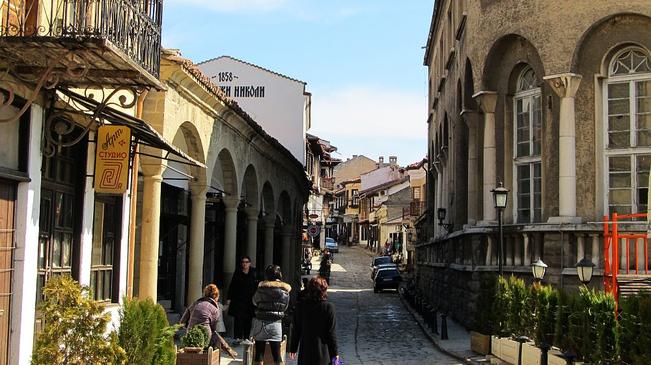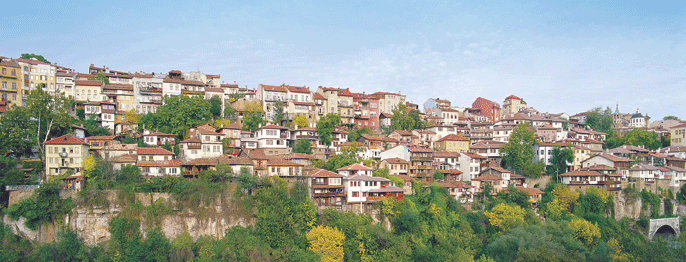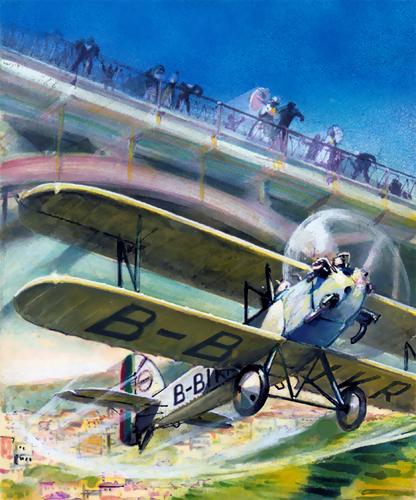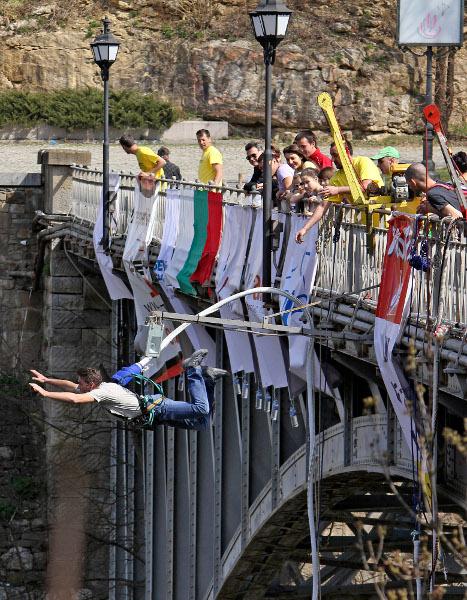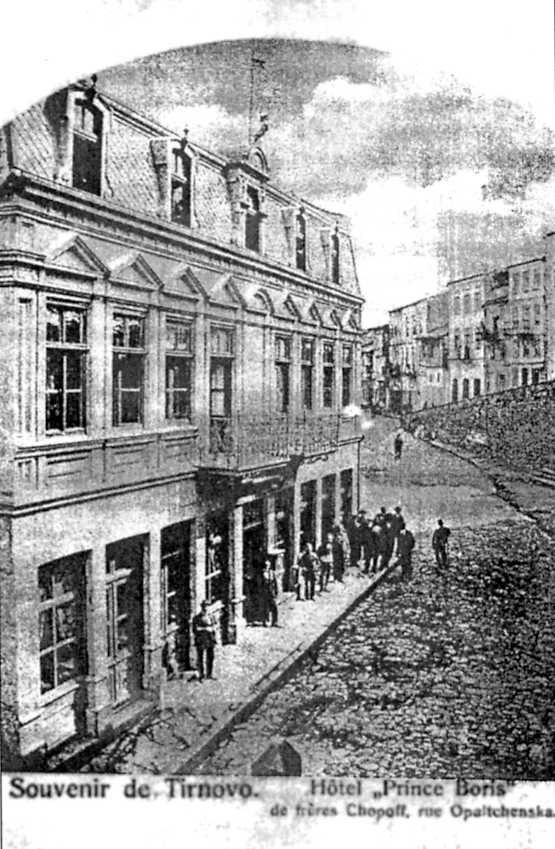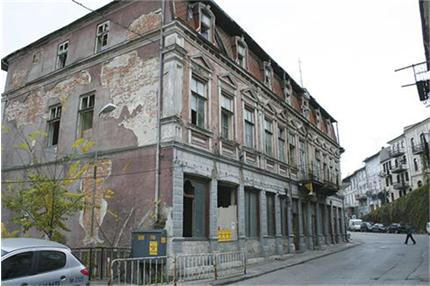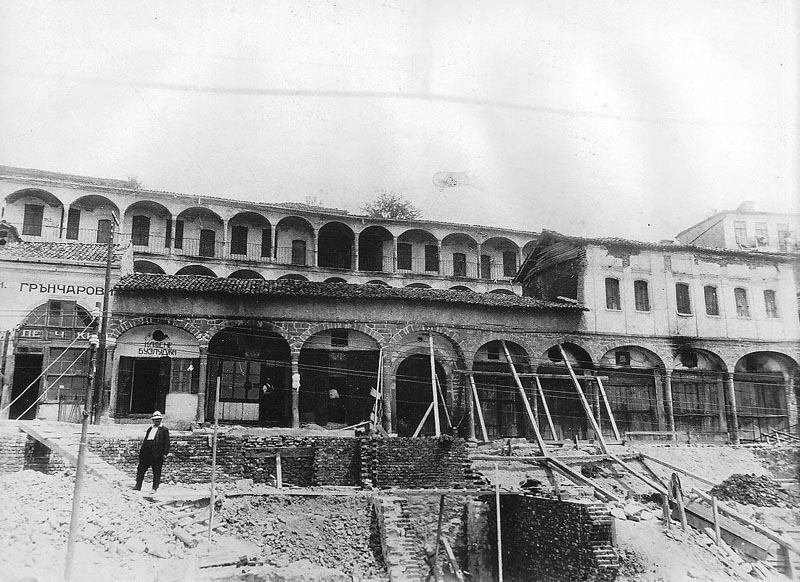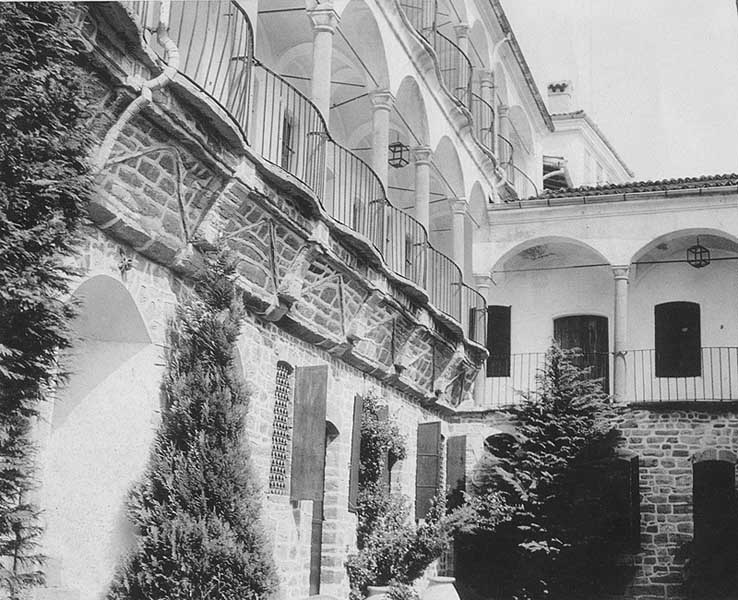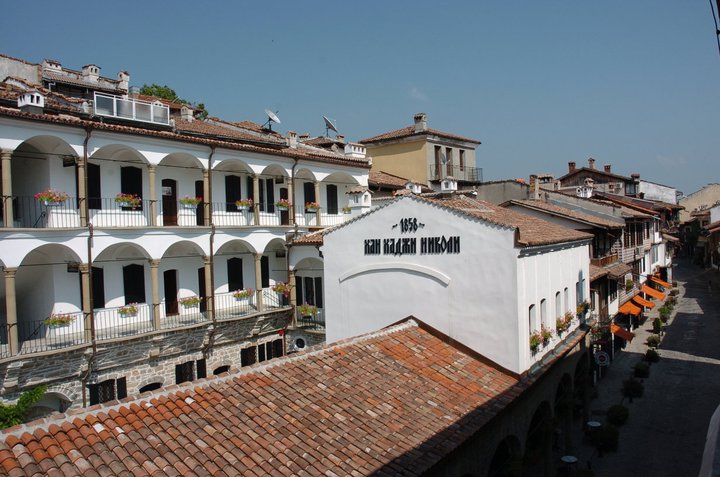The imposing building of the Old Post Office is located at the beginning of Samovodska Charshia, opposite the Hadji Nikoli Inn. It was erected on a very historic spot. There was once a house that accommodated the Edinstvo (Unity) committee of Veliko Tarnovo in the summer of 1878, whose main goal was the unification of the Principality of Bulgaria and Eastern Rumelia.
Its was built about 70 years ago after the project of the Bulgarian architect Stancho Belkovski. The construction began in 1932 and ended two years later, in 1934, when the post office was officially open.
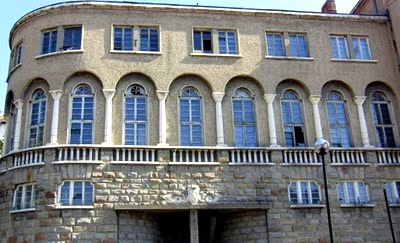 Belkovski studied in Germany, which explains the German influence on the design of this beautiful building, which at the time was thought to be too modernistic.
Belkovski studied in Germany, which explains the German influence on the design of this beautiful building, which at the time was thought to be too modernistic.
Tarnovians did not like the building much. It concealed the view to Hadji Nikoli Inn and was in clash with the architectural style of Samovodska Charshia. The building often incited much debate in the local community.
The Old Post Office functioned until 1954, when the new post office was built in the centre of Veliko Tarnovo, overtaking its main functions.
It was eventually shut down in 2005 and left to decay. With broken windows, damaged flooring and peeling paint, this building just stands there waiting for someone to unleash its great potential.
Every now and then it is reopened to host contemporary art exhibitions and installations.

